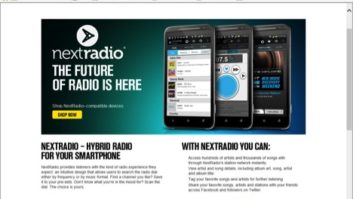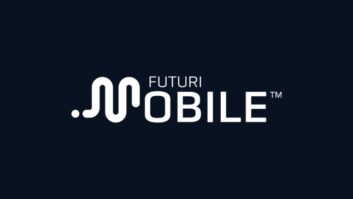Sprint is happy with the take-up rate of the NextRadio app, a spokeswoman told Radio World at CES.
While not detailing what marketing plans the carrier has for its phones that come preloaded with the FM smart device app, she said the carrier considers the NextRadio app a differentiator that helps Sprint distinguish its products from others in the fast-moving, crowded world of consumer electronics.
Hubbard Radio executive Bruce Reese echoed a similar thought. He tells RW here in Las Vegas that the NextRadio app “makes us look like the other digital” offerings. Hubbard has embraced the full interactive aspects of the NextRadio app, saying it “gives us a digital backchannel.”
As applied in smartphones, NextRadio uses a tuner chip embedded in the phone to let the consumer listen to local FM stations via traditional airwaves thus not impacting the cellular data plan. The headset or speaker wire serves as the receive antenna.
Both automakers and Sprint are pressing for more stations to use the interactive features of the NextRadio app. In that vein, Emmis is set to discuss an app called “Slingshot” with the NAB Technology Committee at their meeting on Thursday. The software now in development makes TagStation, which drives data to the NextRadio app, easier for stations to use, according to TagStation President Paul Brenner. “We’re trying to simplify what stations have to do.”
NextRadio is also demoing a companion auto app in the Ford Fiesta in iBiquity’s booth. The NextRadio demonstration highlights the integration of HD Radio technology and IP-delivered services leveraging the Applink and OpenXC available in Ford vehicles.
The companion app “visualizes over-the-air FM and HD Radio” in the dashboard. It’s being called a companion app because it can be used either with a smartphone or directly with a car’s enfotainment system.
With the companion auto app, the listener hears audio coming from the car stereo and the visual elements are originating over the Internet, says Brenner. The app can deliver a synchronized visual element to the car audio system directly, or, paired with a smartphone the app acts as the back channel for an in-dash version of NextRadio The project was spurred with NAB Labs funding.



